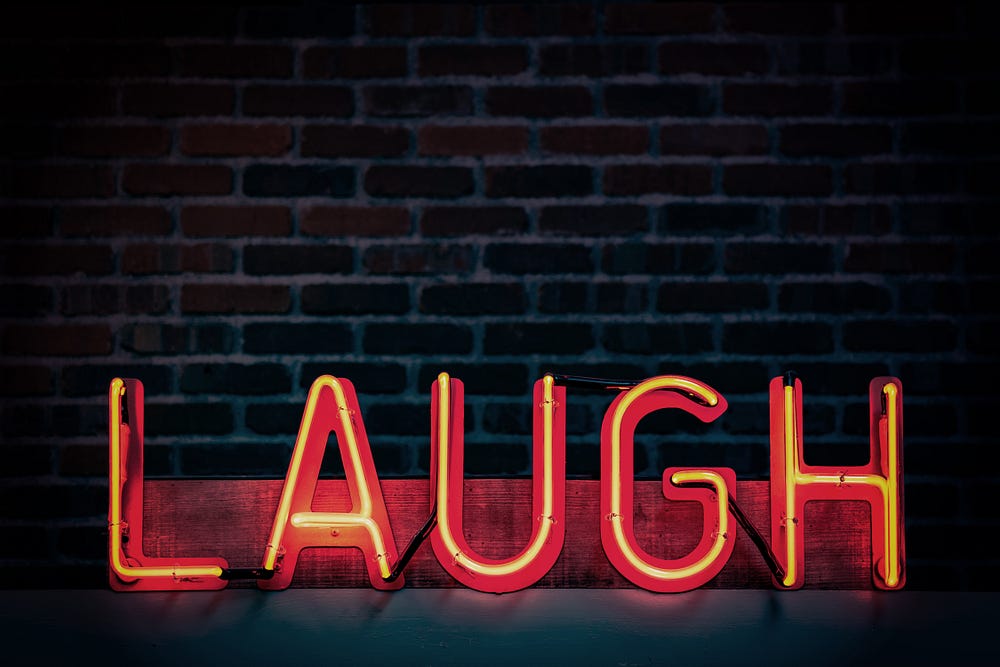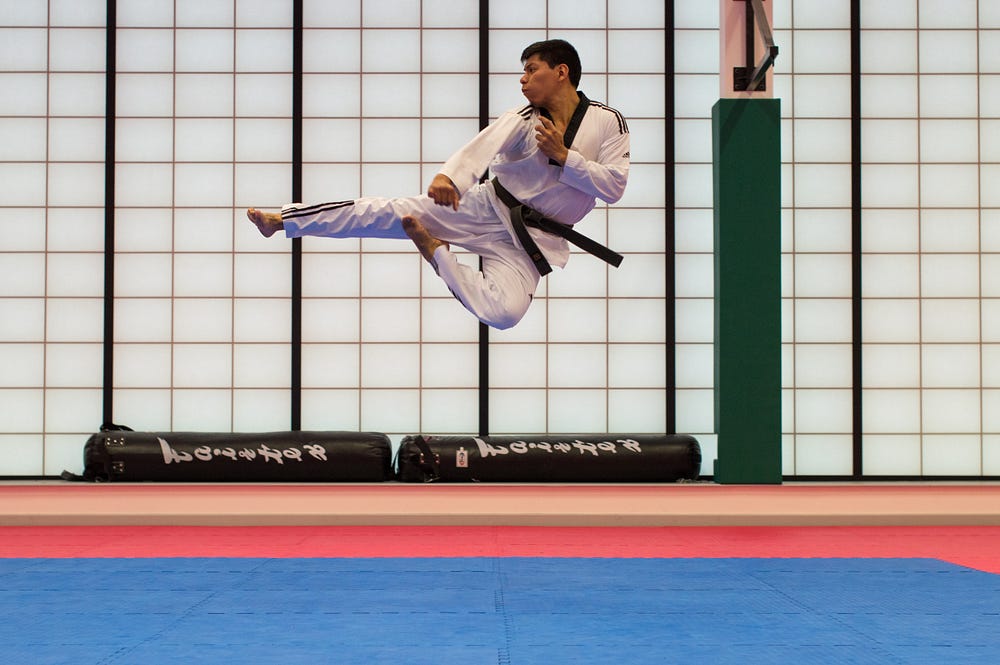Nine and a Half Comedy Techniques Which (Might) Make Readers Laugh. Plus, one bad joke that definitely won’t!

Here goes: one bad writing joke coming up.
*clears throat.
By the way, this was a joke I learned from my Italian nonna, who used to infuse the bread she baked in her Sicilian forno with the tears that rolled down the faces of her guffawing customers when she —
Oh no. Wait. This isn’t a food blog where I need to fill the first 1,453 words with backstory rather than the BLOODY scone recipe I was looking for. And no, Nonna’s scones didn’t have blood in them either.
Where was I? Oh yes, the writing joke. Without further ado, here it is (loaf of tear-infused bread not included).
My writing joke
“I bought a pen that can write underwater…
It can write other words as well.”
Eesh. Tough crowd.
Jokes are perhaps the most obvious way we have of making others laugh with our words, but writers have their work cut out. Now imagine going to a talk by your favourite author. They are halfway through their set, between fascinating anecdotes and amazing insights. And they slip in this joke. They hold up the pen and deliver the punchline with gusto “It can write other words well.”
It gets a laugh, right?
I’d wager that you didn’t laugh out loud when you read the joke the first time around. Words can be funny, but much of what makes us laugh (tone, physicality, visuals, proximity, audience) is missing when jokes stare back at us from the page (or screen).
As writers, we have our work cut out to make our work funny.
n.b. This article isn’t designed to be funny. I wouldn’t want to do something as obvious as lead by example, would I? Otherwise, I would have started with a much better joke.
Why humour is a crucial skill for writers

This one is simple: humour is one thing that sets you apart from machines.
Can ChatGPT tell a joke? No. It can copy a joke. It doesn’t know the context of the joke, and the other more nuanced forms of humour below cannot be churned out without the nouse to feed in the right comedy instructions.
As we move forward into a machine-content world, writing that cuts through the bla will win out. Learn how to write funny and you’ll be laughing all the way to the bar (where most writers inevitably end up).
“Laughter is an orgasm triggered by the intercourse of sense and nonsense.” ― Mark Shatz, Comedy Writing Secrets
Make your articles enjoyable, shareable, and memorable by making readers laugh. This ‘how to funny up your writing’ article will not give you the recipe for comedy, just the ingredients. Some of these comedy techniques are as incongruous as smoked salmon and custard. Make sure you know what you are cooking (because I don’t). I’m just a reader, hoping that someday, I will taste the hilarity you learned here (I really should stop ‘consuming’ content). Oh, and this article is NOT supposed to be funny. Don’t you dare laugh!!!
Nine and a half kick-ass techniques to make your article just a little bit funnier

- Include a surprising of irregular items at the end of a list of three. This plays with readers' expectations, allowing the incongruous item to act as a punch line.
e.g. I got my first bikini. It’s a three piece: It’s a top, a bottom, and a blindfold for you. — Wendy Liebman - Use anachronisms — use objects or names which are wildly out of place (a medieval scholar called Britney) or deliberately misattribute quotes in time:
e.g. ‘Don’t believe everything you read on the internet.’ — Abraham Lincoln. - Generate funny images — the joy of reading is imagination. If I think of an elephant wearing a pink tutu riding a tiny tricycle on a tightrope, you did. These are good for analogies and similes.
- Tell a story badly. Go off on a deliberate dead-end tangent, change the details or get the ending wrong.
e.g. At the stroke of midnight, Cinderella’s coach turned back into a banana. The prince transformed into a frog, and she went viral on YouTube by posting videos of her satisfyingly thorough house cleaning. - Be self-deprecating. Never make the reader the butt of the joke. Focusing on you allows the reader to feel relaxed and in control.
e.g. Feel free to use this article as a bad example. That way, it won’t be totally useless. - Create inconsistencies. Being deliberately inconsistent lets the reader in on the fun while making you the butt of the joke.
- Add funny-sounding words — bumfuzzle, cattywampus, hodgepodge, collywobbles, diphthong, and brouhaha are all real words. Use archaic words or ones designed to be vaguely funny (like ‘doohickey’).
Pro tip: words with ‘k’ sounds are deemed to be funnier than others — klutz, cupcakes, chicken, pickle, quack, fartlek, lickety-split, and of course Krusty the clown.
8. Be overly precise. Include an unnecessary detail for comic effect.
e.g. My diet’s going well. Most days I’m sticking to my recommended intake (apart from one little slip last Sunday). Last Sunday I ate approximately 12,565 calories.
9. Use twisted clichés. This is another way of wrong-footing the reader. Take a tired, cliché and change the ending.
e.g. “If at first you don’t succeed, then skydiving definitely isn’t for you.” — Steven Wright
9.5 Exaggerate (this one only counts for half because it’s kind of similar to being overly specific).
e.g. It was so cold… we didn’t clean the house — we just defrosted it.
Obviously, there are other comedy techniques you can use when writing, but hopefully, these can get you started. As for when you should use these techniques and how to combine them, that’s up to you, friend. Good luck.
Suggested reading on Medium
Publications: Slackjaw, The Haven, Muddy Um, the Belladonna
Writers: David B. Clear, Christine Stevens, Alex Baia, Robin Wilding

.png)